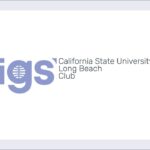
The geosynthetics market in Portugal may be smaller than others, but its impact in our global industry is significant. Chapter President José Luís Macado do Vale shares his chapter’s achievements.
When was your chapter formed?
“The IGS Chapter of Portugal was formed in 2001 and belongs to the Portuguese Geotechnical Society (SPG) as a Technical Committee.”
How many members do you have?
“We have 39 individual members, including students, and one corporate member.”
What is the range of members?
“The IGS Chapter of Portugal consists of consultants, suppliers, researchers, academics and students.”
Why are you proud of the chapter?
“We are mainly proud of our achievements in the promotion of several technical and scientific events to disseminate knowledge in the field of geosynthetics. We hope that the scope and quality of the works presented contributed to the technical updating of our engineers, academics, researchers and students as well as helping to improve construction practices.”
What have you been doing in the chapter? Tell us about some of your events.
“The current board of directors (2016-2020) has regular meetings and organizes technical and scientific events. Annually, it hosts workshops on different topics. For example:
- Construction and rehabilitation of railway infrastructures (2017)
- Reinforcement of soft ground (2018)
- Waterproofing of hydraulic works (2019)
- Coastal erosion control (due to take place in March 2020 but postponed due to Covid-19).
It also collaborates on the organization of several geotechnical seminars and conferences in Portugal. It promotes important collaboration with universities to disseminate geosynthetics knowledge. In 2015, a successfully two-day Educate the Educators (EtE) event was organized in Lisbon.
Finally, it is worth highlighting the publication of a book on geosynthetic applications, called “Geossintéticos em Engenharia Civil. Dimensionamento, instalação e casos de obra.” (Geosynthetics in civil engineering. Design, installation and case studies). The goal is to make it available online by the end of the year.”
Do you have a Youth section? If so, what sort of initiatives do you have available for younger members?
“We participate in the Young Geotechnical Award of SPG, which is designed to reward works that contribute to the progress of technical and scientific knowledge and to the resolution of problems in the field of geotechnical specialties, including geosynthetics.
The IGS Chapter of Portugal also promotes the participation of students at national events through free or reduced registration.”
How would you describe the level of adoption about geosynthetics in your region?
“It is quite good. Geosynthetics are used in several applications, such as landfills, roads, railways, tunnels, erosion control, etc. Nevertheless, as new products are arising, the understanding of their potential is a work in progress.”
Where are the areas of most opportunity?
“Railway rehabilitation, subway line construction, environmental remediation, and costal erosion control will be the areas of most opportunity in the near future in Portugal.”
What does the industry need to do to ‘grow the market’ in your area?
“More knowledge = bigger market! Engineers need to understand geosynthetics’ functions and the advantages of their use. We believe that the level of geosynthetics use on projects is largely correlated with the level of knowledge that engineers have on them. Therefore, a continuous updating by the industry of the highest level of research, development and innovation to educators, consultants and construction companies is one of the most effective actions the industry can promote to impact on its own results.”
Where is the geosynthetics industry concentrated in your region?
“Actually, the geosynthetics industry in Portugal is not huge, but there is a strong relation with Spain where some important industries are located. Also the most relevant brands from the European manufacturers are well represented.”
What type of products have good adoption / less adoption?
“In Portugal, nonwoven geotextiles, geogrids, geotube units and geomembranes are the most used in the construction industry. Woven geotextiles, geocells and superficial erosion control mats have less adoption.”
Any notable facts about the market or the chapter?
“Portugal has a small market. Nevertheless, strong efforts are made to increase the implementation of geosynthetics in public and private works.”
Any notable projects in the region that have used geosynthetics?
“There are some recent interesting and notable projects in Portugal using geosynthetics. Some examples:
- Dams and Reservoirs: Paradela Dam rehabilitation, new Pico da Urze Dam, new Cerro da Mina Reservoir and Pracana Dam.
- Non-Hazardous Waste (NHW), Hazardous Waste (HW) and Inert Waste (IW) Landfills: NHW Landfill of Alta Estremadura (Leiria), NHW Landfill of Meia Serra (Madeira Island), NHW of Beja, HW of CIRVER, IW of Celtejo.
- Roads, railways and ports: embankment stabilization at the historic Tua railway, rehabilitation of North and East railways, new N14 road bypass, new Norwest ecotrail network, new Setúbal Ro-Ro port.
- Environmental remediation: sludge dewatering in Tagus River clean-up at Vila Velha de Ródão; environmental rehabilitation of the former mining area of São Domingos.
- Coastal erosion control: Ofir dune core reinforcement and towers protection; Amorosa beach and old town protection.
Find out more about the IGS Chapter of Portugal here.
This article was featured in the IGS Chapter Chat. Chapter Chat is a quarterly publication released by the International Geosynthetics Society. Each edition shines a spotlight on the work of the IGS’s 47 worldwide chapters. The Summer version of Chapter Chat also features profiles on the Portuguese, Australasia, and Thai chapters, and includes a round-up of global chapter news and events. To read the 2020 Summer Chapter Chat, please CLICK HERE and please remember to share the issue via your social media profiles.





















